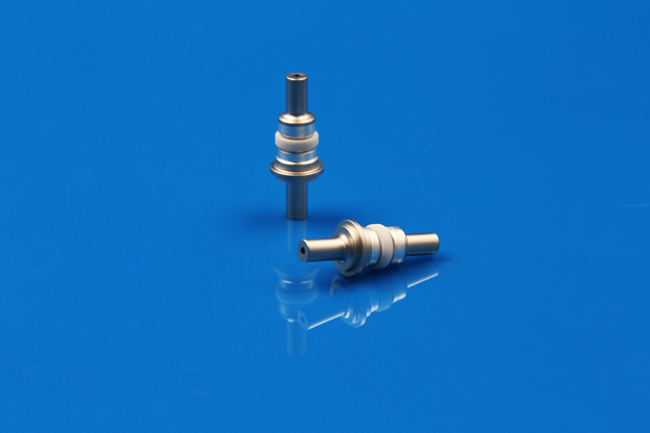What’s the breakthrough on technology of Ceramic to Metal
The Molybdenum/Manganese metallization developed the technology on Ceramic-to-metal brazed assembly, it provides high mechanical strength and good electrical insulation. In the very beginning, it was used in vacuum electronic devices, gradually applied to semiconductors, integrated circuits, electric light sources, high-energy physics, aerospace, chemical industry, metallurgy, instrumentation and machinery manufacturing, and other industrial fields.
So how to choose a material becomes more and more critical for good vacuum brazing. Here we’re mainly discussing about 3 different types of materials that will be used for ceramic-to-metal.
- Ceramic
- Al2O3
- BeO
- BN
- AlN
- Metals
- Kovar alloy
- OFC
- Stainless steel
- Mild steel
- Solder
- Ag
- Ag-Cu
- Cu
- AU-Cu
- Au-Ni
The Ceramic materials are required to be high-temperature stabilized and good thermal expansion coefficient, INNOVACERA applies mostly Al2O3. Since ceramics will not be directly wetted, which impedes the adherence of molten metal layers and adhesives, the different coefficients of thermal expansion (CTE) between Ceramic and Metal. Breakthrough on such difficulties is with a soldering or brazing process.
Metal layer is applied on ceramic components via Mo/Mn metallization and Plating or Active brazing, after that, the ceramic and metal components are joined by the melting and subsequent solidification of a filler metal-Solder, with different solders for different applications in different working temperatures.

What are the advantages of Ceramic-to-Metal?
Advanced ceramic materials have the excellent properties of high melting point, high-temperature resistance, corrosion resistance, abrasion resistance, and other special properties, but also have radiation resistance, high-frequency resistance, high voltage resistance, insulation, and other excellent electrical properties, with rapid development of science and technology, the application of the field of engineering structures often need to combine advanced ceramic materials with metal materials, so that the advantages of the two materials complement each other, giving the best performance of ceramics. By realizing the combination of ceramic and metal brazing, improves the performance of its welded joints, and can make it work in higher temperatures and harsh environments, to achieve a wider range of application prospects!


Comments
Post a Comment